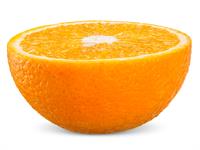UPSKILL MATH PLUS
Learn Mathematics through our AI based learning portal with the support of our Academic Experts!
Learn more1. The diameter of an orange is \(8 \ cm\). Calculate the total surface area of the half orange.

Solution:
Diameter of an orange, \(d\) \(=\) \(8 \ cm\)
Radius of an orange, \(r\) \(=\)
A half orange is in the shape of a hemisphere.
Total surface area of a hemisphere \(=\) \(3 \pi r^2\) sq. units
\(=\)
\(=\)
\(=\) \(150.86\)
The total surface area of the half orange is \(150.86 \ cm^2\).
2. If the inner and outer radius of the hemispherical shell is \(3 \ cm\) and \(5 \ cm\), find the thickness and the curved surface area of the shell.
Solution:
Inner radius, \(r\) \(=\) \(3 \ cm\)
Outer radius, \(R\) \(=\) \(5 \ cm\)
Thickness \(=\) \(R - r\)
\(=\) \(5 - 3 = 2\)
The thickness of the shell is \(2 \ cm\).
Curved surface area \(=\) \(2 \pi (R^2 + r^2)\) sq. units
\(=\)
\(=\)
\(=\)
\(=\) \(213.7\)
The curved surface area of the hemispherical shell is \(213.7\) \(cm^2\).
Important!
The value of \(\pi\) should be taken as \(\frac{22}{7}\) unless its value is shared in the problem.